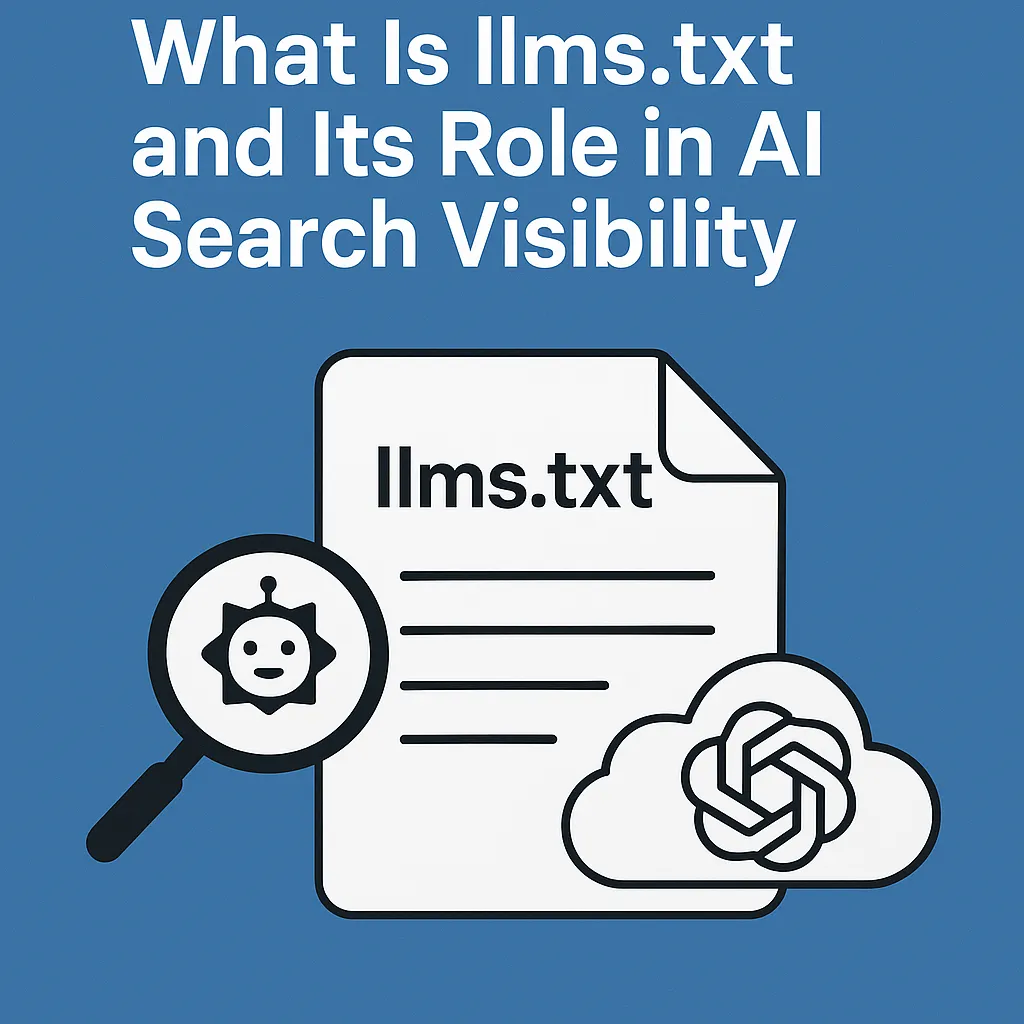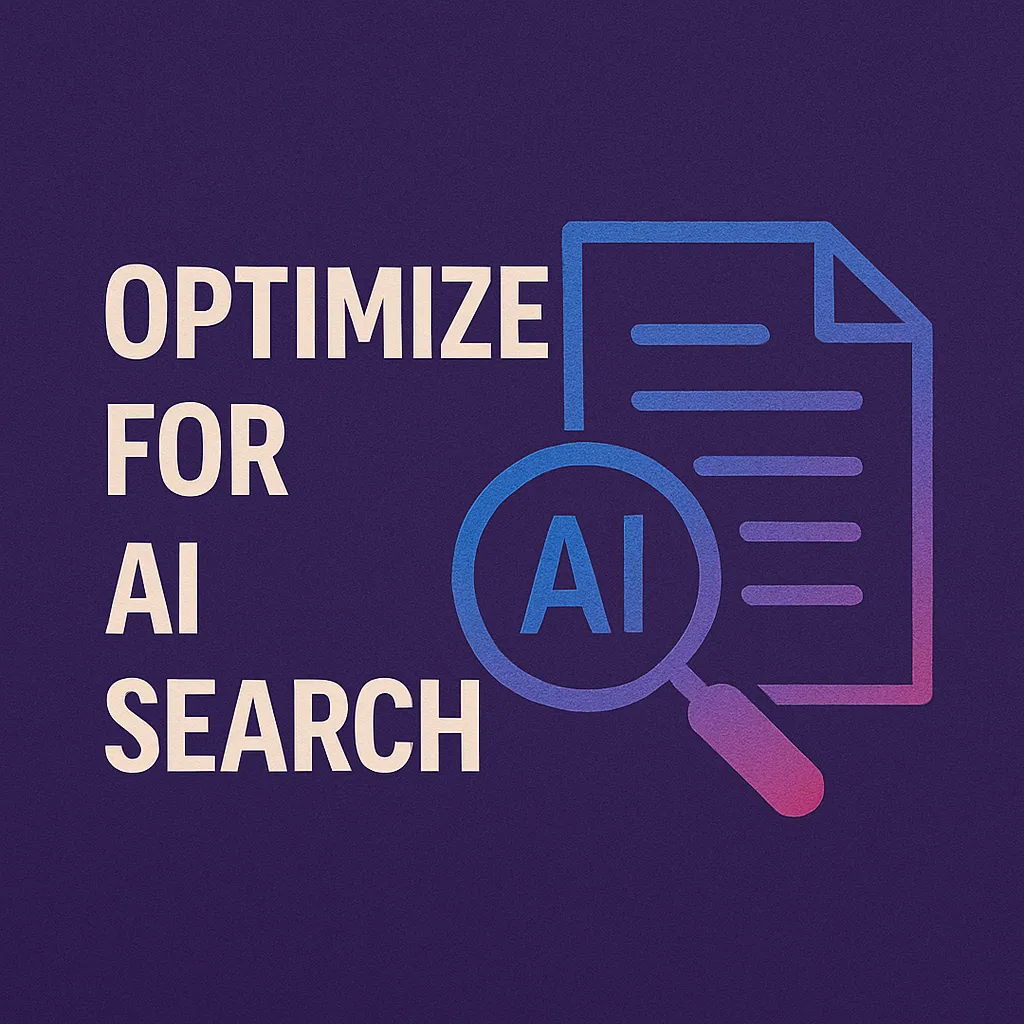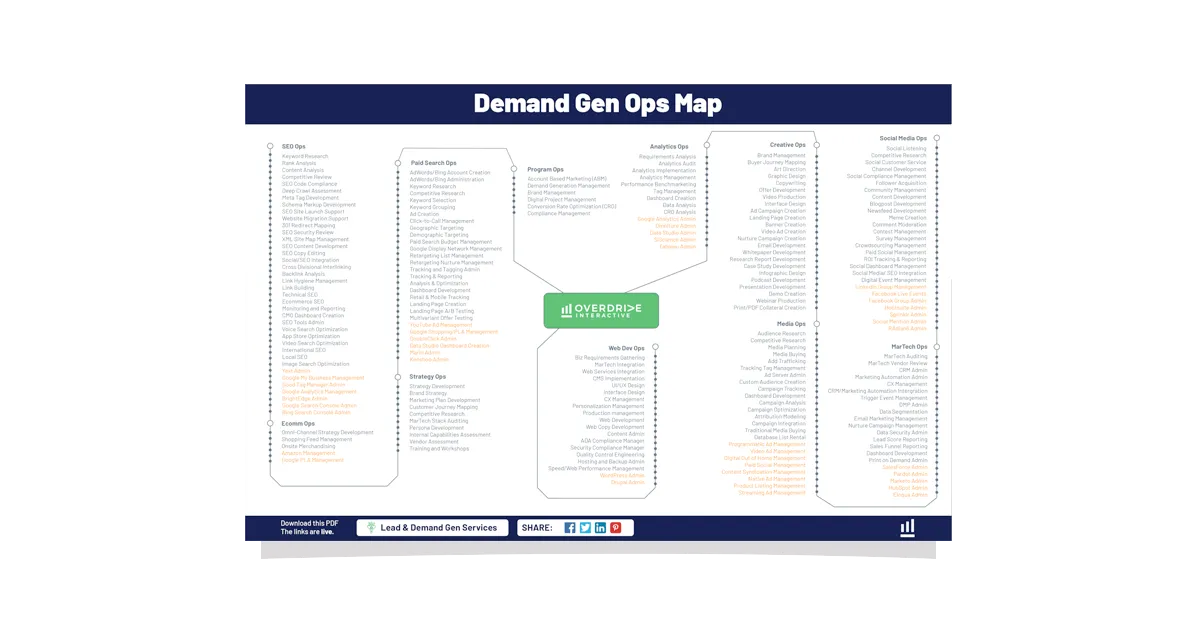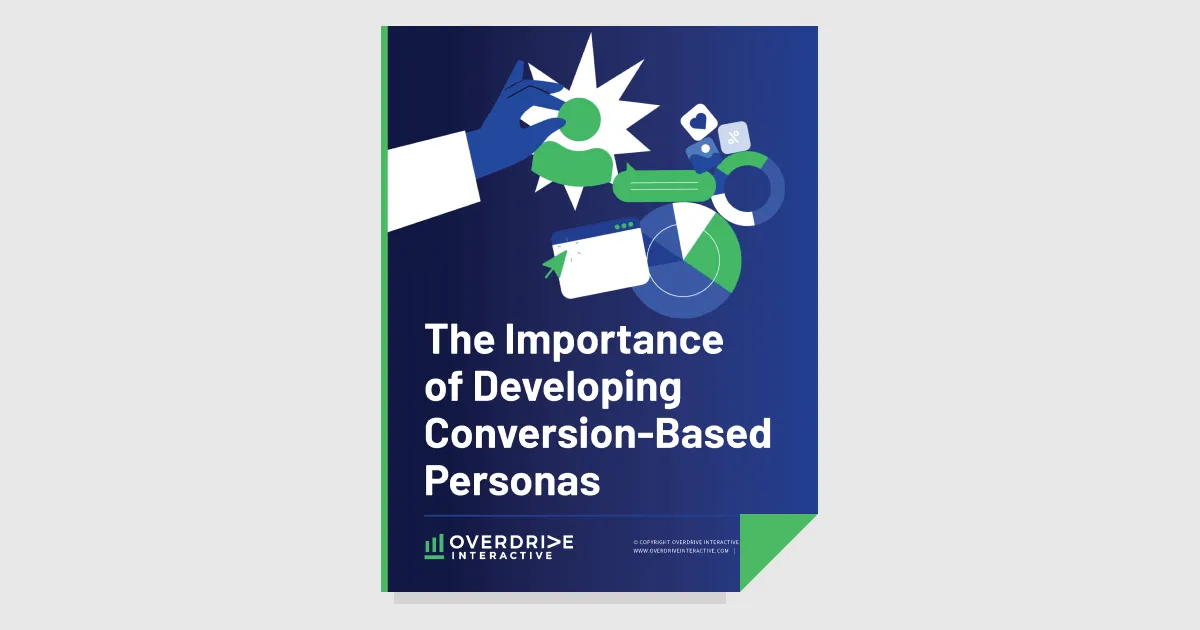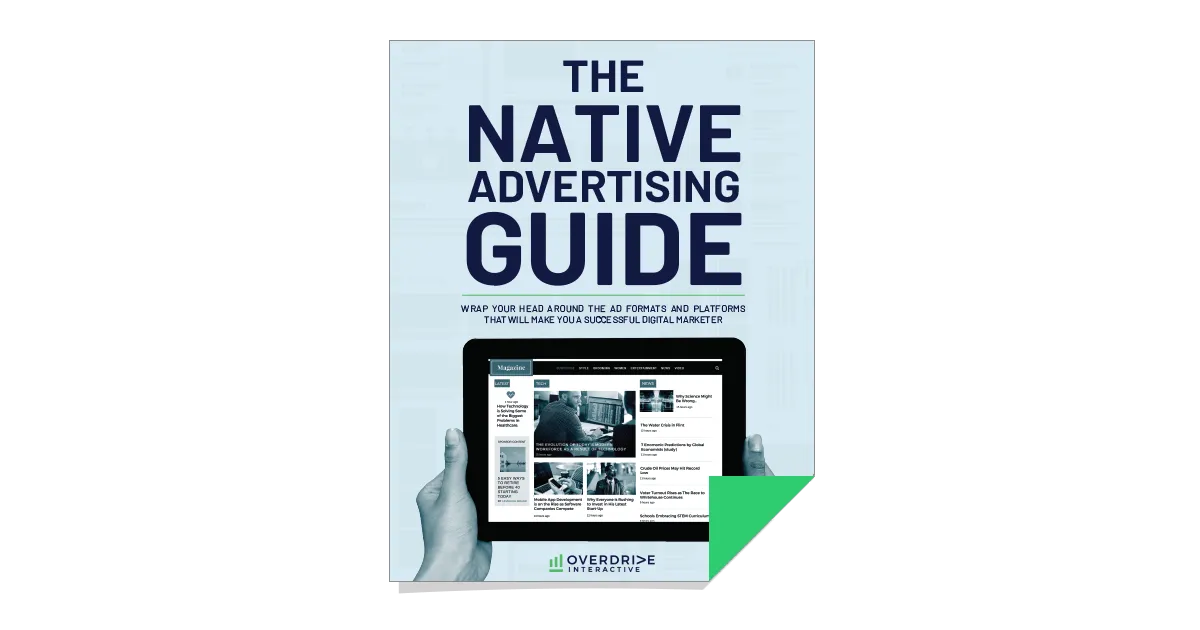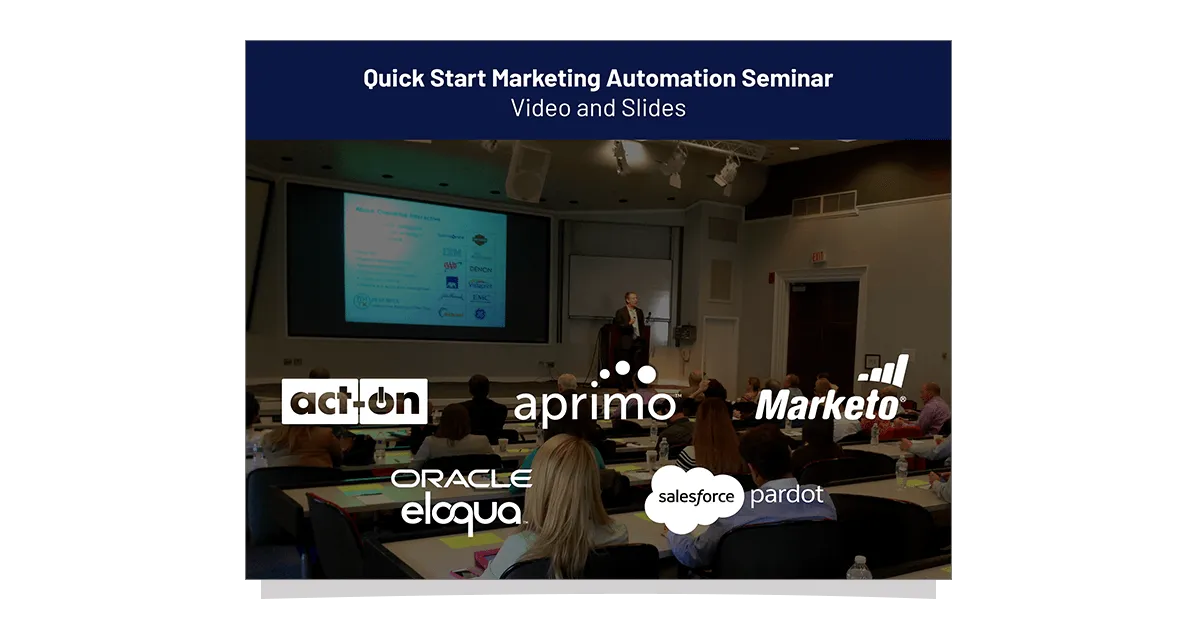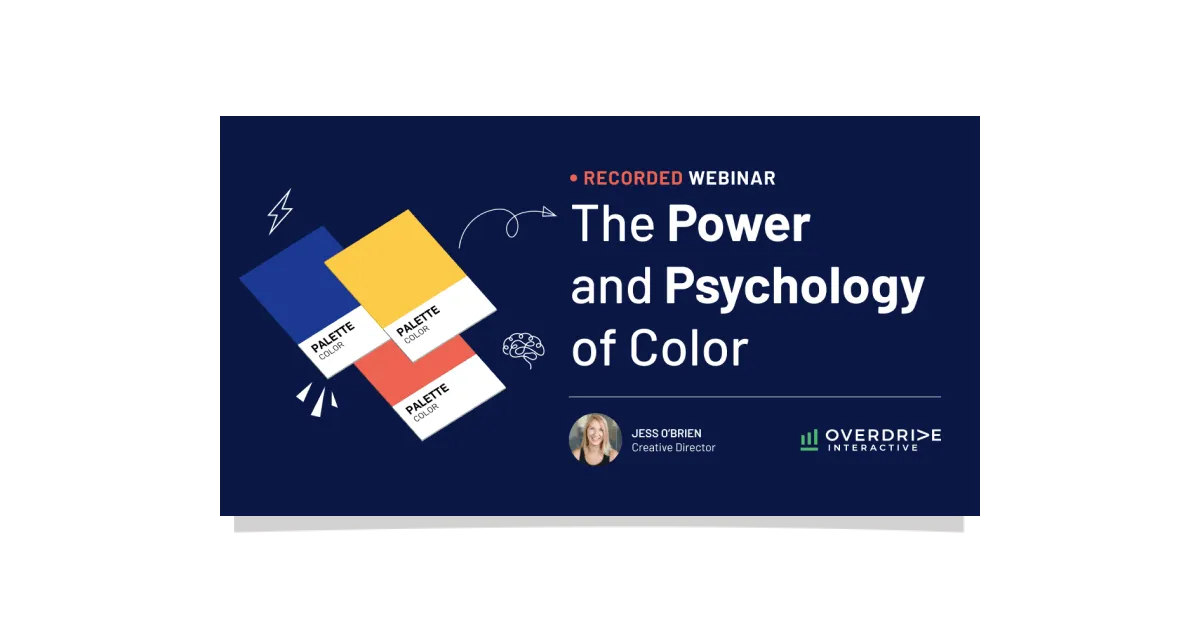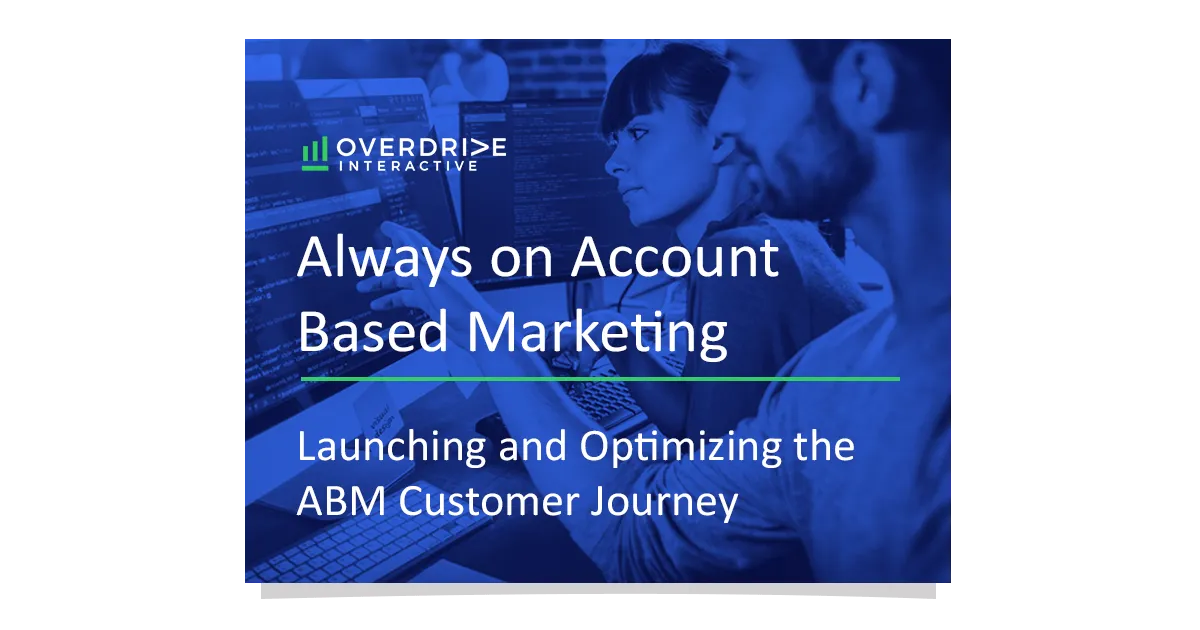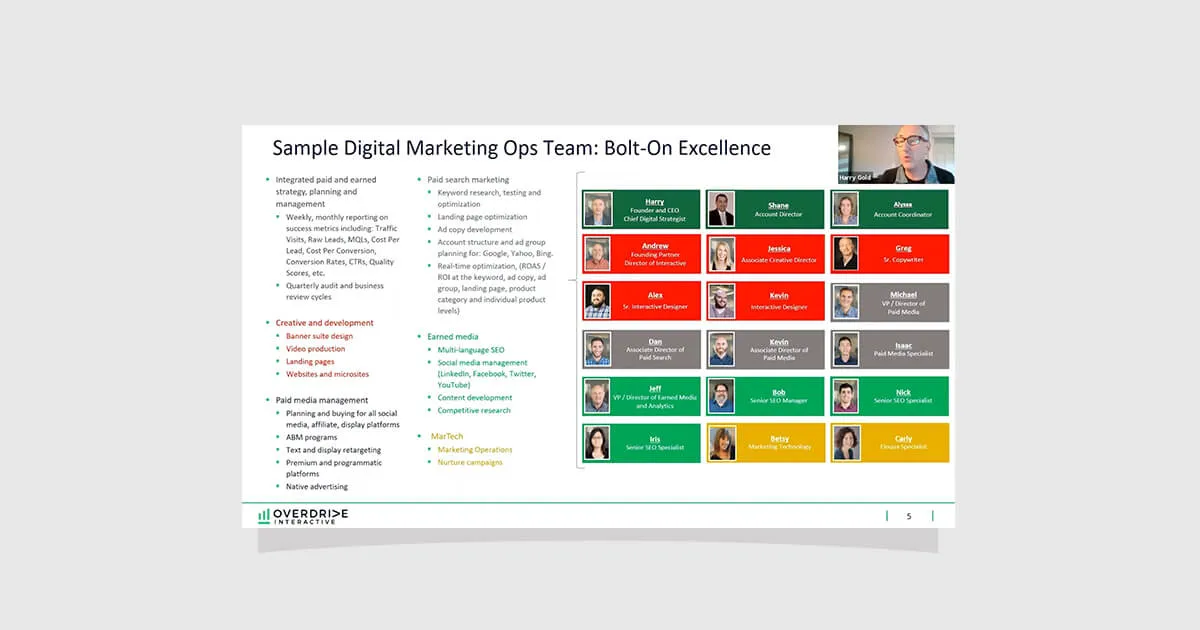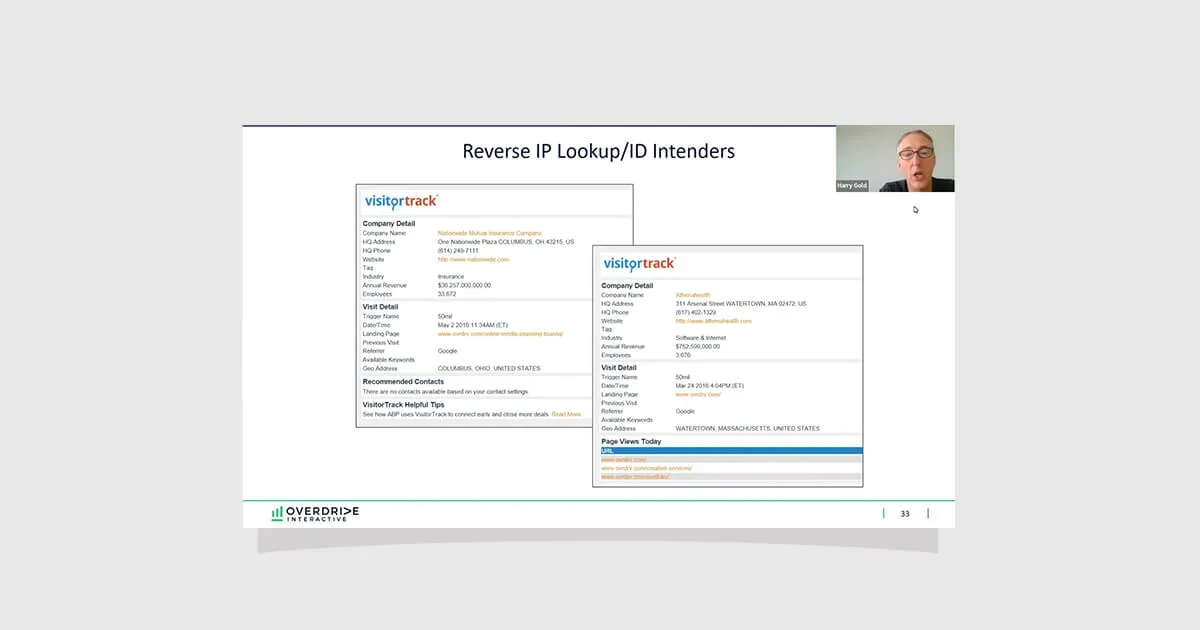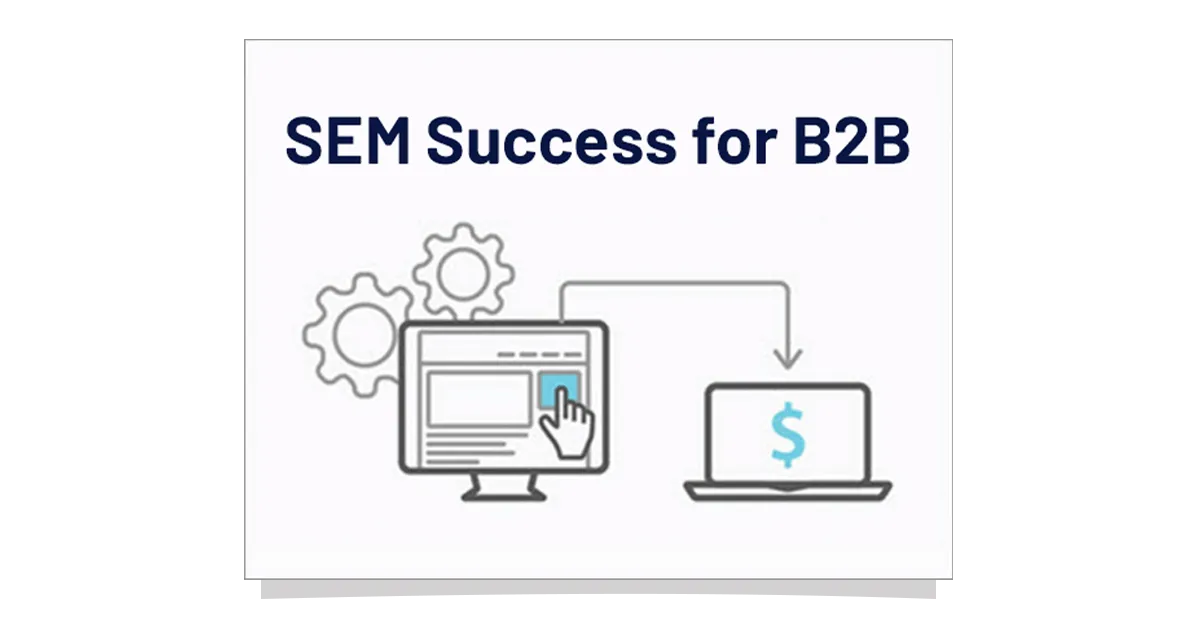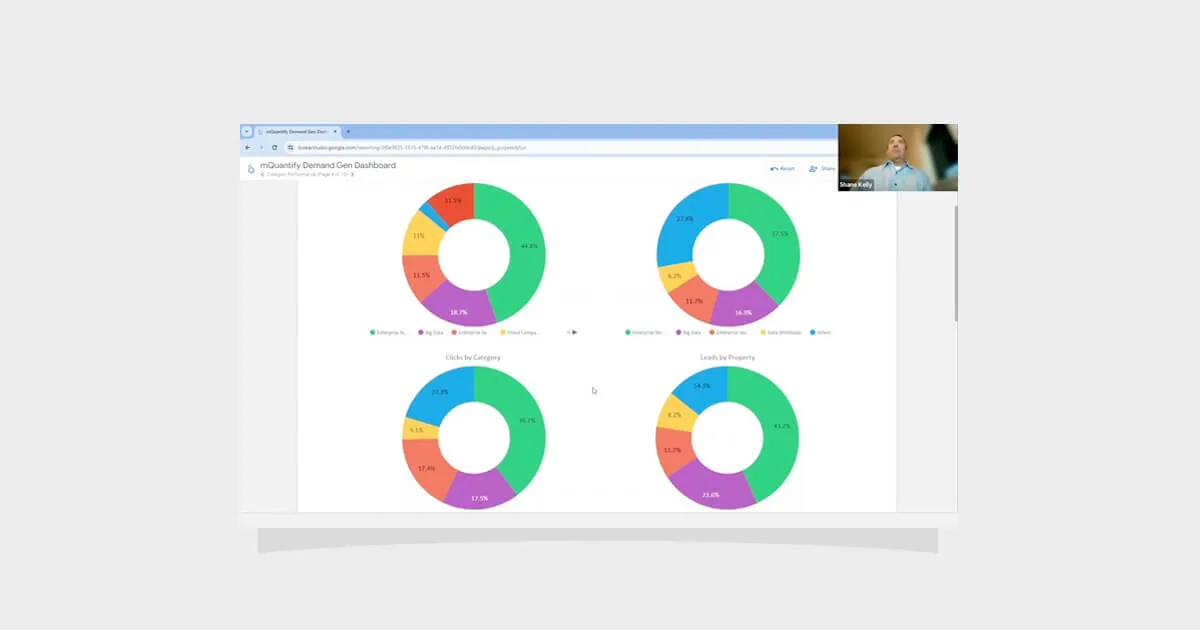The CMO as Brand Architect in the AI Era

The CMO as Brand Architect in the AI Era
AI is rewriting the CMO playbook. Every marketing leader I know is already using AI to sharpen brand storytelling, predict consumer shifts, and squeeze more performance from every dollar. They're not asking whether they should use AI, but how. And the “How” is getting more exciting and complicated. How do you balance automation with the human intuition that sparks breakthrough ideas? How do you integrate AI insights into decisions about media mix and budget allocation?
The answer lies in how the CMO role itself is evolving. Today’s CMO is less an orchestrator of static campaigns and more the architect of an adaptive brand story that learns and evolves in real time because AI never stops listening, predicting, and optimizing. Each of the following principles forms a foundational discipline for this new era: core operating imperatives CMOs must master if they want to build a brand that is both dynamically data-driven and deeply human.
Sharpening Brand Storytelling With Predictive Identity
For decades, the brand story was something you pitched, planned, and polished in annual offsites. Then you hoped it would spark a connection in the wild. In the AI era, the story is alive. Machine learning tracks sentiment swings on social, micro-trends among subcultures, and emotional spikes in content engagement. AI models feed this intelligence right back into the creative process, surfacing which messages resonate and why. What’s changing is that CMOs no longer have to guess what moves the needle. Every headline, visual, and tagline can be tested in real time, adapted, and personalized for segments that didn’t exist yesterday.
This is marketing in high fidelity: noise filtered out, signals amped up. Predictive analytics mean the story a brand tells isn’t just based on what worked last month or last year but on what’s about to become relevant. This isn’t reactive, hope-for-the-best brand management; it’s a living, breathing adaptation process.
Human Creativity, Machine Intelligence: Striking the Balance
But before CMOs throw out the focus group for the algorithm, let’s get real: AI is not a creative director. Despite its power, real creative impact comes from intuition, lived experience, and cultural sense. The trickiest question in today’s brand marketing is how to keep human ingenuity at the center while AI rapidly expands scope, scale, and efficiency.
The answer isn’t a binary. It’s about putting AI to work as a thought partner, not a replacement. Think of AI as a relentless researcher and pattern finder. Used correctly, it can challenge assumptions, spark new angles, and explore creative territory faster than any brainstorming session. This frees teams from repetitive grunt work and lets them focus their energy on crafting the bold ideas, emotional hooks, and nuanced stories that only humans can invent.
Essential to this balance: always calibrate outputs for tone, nuance, and emotional impact, and never turn brand voice over to pure automation. In sectors where authenticity equals trust (beauty, lifestyle, purpose-driven brands), even cutting-edge synthetic imagery can be a liability.
Hyper-Personalization Without Losing Brand Cohesion
AI gives marketers the power to personalize at mind-boggling scale. Dynamic personas can update weekly, not yearly. Email, ads, landing pages, and offers can feel uniquely tailored. But the pitfall here is “brand drift,” where every personalized message feels different, diluting the underlying identity.
That’s why smart CMOs deploy AI audit tools to scan for voice, language, and visual consistency. They set strict guardrails for what makes a message on-brand, ensuring that even a million unique touchpoints still sing the same tune. Brands win when every consumer feels the message is for them but still knows exactly who is speaking.
The Art and Science of Media Mix and Budget Allocation
AI is the new engine behind smarter spend, analyzing cross-channel data sources and predicting where each incremental dollar will have the most impact. AI can optimize in real time, reallocating based on performance and surfacing opportunities that manual review would miss.
But automation doesn’t mean abdication of strategic control. CMOs have learned to trust, but verify, using “gut checks” to validate what the data shows. The combination of machine-driven allocation supported by human oversight means both efficiency and intuition get their due.
First-Party Data: The New Fuel for AI Branding
With the decline of cookies, the ability to collect rich, compliant first-party data is now mission critical. CMOs are investing in owned audiences, smarter segmentation, and privacy-first personalization. AI thrives on quality data, from direct interactions, CRM, and owned platforms. The payoff is building a feedback loop that fuels better insights, sharper storytelling, and more relevant marketing in every channel.
Ethical Branding, Algorithmic Integrity
Brand equity is built on trust. The rise of AI brings new risks: bias, opacity, and erosion of transparency. The best marketing leaders are doubling down on ethical guardrails, auditing AI models for fairness, documenting decision processes, and communicating clearly with consumers about how AI shapes their experience. Inclusive datasets are table stakes for protecting reputation and equity.
Revenue Intelligence: Turning Data Into Brand Growth
AI helps marketing leaders track the journey from impression to conversion, scoring leads, predicting pipeline, and linking narrative efforts to bottom-line impact. Armed with this intelligence, CMOs can sharpen targeting, maximize ROI, and tell the story of growth in numbers. The narrative shifts from traffic and clicks to outcomes and brand momentum.
Strategy, Data, and Distinctive Storytelling
The next wave of brand marketing is about orchestrating AI. Strictly speaking, AI is a tool, but it’s a lot more powerful than a hammer. The winning formula: treat machine efficiency and human inspiration as equal partners. Build content designed for AI interpretation, enforce creative discipline, and stay alert for brand drift. CMOs who get this right keep them relevant, trusted, and scalable, no matter how fast the rules get rewritten.
What worked last year, like AI-driven optimization, rapid personalization, smarter spending, is now complemented by creative supervision, data integrity, and ethical clarity. The brand story may be algorithmically adapted, but it’s still human at its core. The most effective CMOs in the AI Era know how to play both sides.
How Overdrive Helps CMOs Architect Smarter Strategy in the AI Era
At Overdrive, we help modern CMOs turn complexity into clarity. Whether you’re navigating the integration of AI, rethinking your media mix, or building a brand that scales across personalized channels, our team brings the strategic partnership needed to move fast—and move smart.
We don’t just plug in tools. We collaborate with you to define objectives, structure the right operating model, and implement AI-powered programs that align with your brand voice, data integrity, and growth goals. From predictive analytics and content strategy to ethical AI audits and revenue intelligence, Overdrive equips marketing leaders with the frameworks, talent, and execution muscle to stay ahead.
The AI Era demands more than adaptation—it requires orchestration. Let’s build the strategy behind your next leap.
Explore how we can support your brand’s evolution—reach out to our strategy team today.
The CMO as Brand Architect in the AI Era

Download the guide to:
The CMO as Brand Architect in the AI Era
AI is rewriting the CMO playbook. Every marketing leader I know is already using AI to sharpen brand storytelling, predict consumer shifts, and squeeze more performance from every dollar. They're not asking whether they should use AI, but how. And the “How” is getting more exciting and complicated. How do you balance automation with the human intuition that sparks breakthrough ideas? How do you integrate AI insights into decisions about media mix and budget allocation?
The answer lies in how the CMO role itself is evolving. Today’s CMO is less an orchestrator of static campaigns and more the architect of an adaptive brand story that learns and evolves in real time because AI never stops listening, predicting, and optimizing. Each of the following principles forms a foundational discipline for this new era: core operating imperatives CMOs must master if they want to build a brand that is both dynamically data-driven and deeply human.
Sharpening Brand Storytelling With Predictive Identity
For decades, the brand story was something you pitched, planned, and polished in annual offsites. Then you hoped it would spark a connection in the wild. In the AI era, the story is alive. Machine learning tracks sentiment swings on social, micro-trends among subcultures, and emotional spikes in content engagement. AI models feed this intelligence right back into the creative process, surfacing which messages resonate and why. What’s changing is that CMOs no longer have to guess what moves the needle. Every headline, visual, and tagline can be tested in real time, adapted, and personalized for segments that didn’t exist yesterday.
This is marketing in high fidelity: noise filtered out, signals amped up. Predictive analytics mean the story a brand tells isn’t just based on what worked last month or last year but on what’s about to become relevant. This isn’t reactive, hope-for-the-best brand management; it’s a living, breathing adaptation process.
Human Creativity, Machine Intelligence: Striking the Balance
But before CMOs throw out the focus group for the algorithm, let’s get real: AI is not a creative director. Despite its power, real creative impact comes from intuition, lived experience, and cultural sense. The trickiest question in today’s brand marketing is how to keep human ingenuity at the center while AI rapidly expands scope, scale, and efficiency.
The answer isn’t a binary. It’s about putting AI to work as a thought partner, not a replacement. Think of AI as a relentless researcher and pattern finder. Used correctly, it can challenge assumptions, spark new angles, and explore creative territory faster than any brainstorming session. This frees teams from repetitive grunt work and lets them focus their energy on crafting the bold ideas, emotional hooks, and nuanced stories that only humans can invent.
Essential to this balance: always calibrate outputs for tone, nuance, and emotional impact, and never turn brand voice over to pure automation. In sectors where authenticity equals trust (beauty, lifestyle, purpose-driven brands), even cutting-edge synthetic imagery can be a liability.
Hyper-Personalization Without Losing Brand Cohesion
AI gives marketers the power to personalize at mind-boggling scale. Dynamic personas can update weekly, not yearly. Email, ads, landing pages, and offers can feel uniquely tailored. But the pitfall here is “brand drift,” where every personalized message feels different, diluting the underlying identity.
That’s why smart CMOs deploy AI audit tools to scan for voice, language, and visual consistency. They set strict guardrails for what makes a message on-brand, ensuring that even a million unique touchpoints still sing the same tune. Brands win when every consumer feels the message is for them but still knows exactly who is speaking.
The Art and Science of Media Mix and Budget Allocation
AI is the new engine behind smarter spend, analyzing cross-channel data sources and predicting where each incremental dollar will have the most impact. AI can optimize in real time, reallocating based on performance and surfacing opportunities that manual review would miss.
But automation doesn’t mean abdication of strategic control. CMOs have learned to trust, but verify, using “gut checks” to validate what the data shows. The combination of machine-driven allocation supported by human oversight means both efficiency and intuition get their due.
First-Party Data: The New Fuel for AI Branding
With the decline of cookies, the ability to collect rich, compliant first-party data is now mission critical. CMOs are investing in owned audiences, smarter segmentation, and privacy-first personalization. AI thrives on quality data, from direct interactions, CRM, and owned platforms. The payoff is building a feedback loop that fuels better insights, sharper storytelling, and more relevant marketing in every channel.
Ethical Branding, Algorithmic Integrity
Brand equity is built on trust. The rise of AI brings new risks: bias, opacity, and erosion of transparency. The best marketing leaders are doubling down on ethical guardrails, auditing AI models for fairness, documenting decision processes, and communicating clearly with consumers about how AI shapes their experience. Inclusive datasets are table stakes for protecting reputation and equity.
Revenue Intelligence: Turning Data Into Brand Growth
AI helps marketing leaders track the journey from impression to conversion, scoring leads, predicting pipeline, and linking narrative efforts to bottom-line impact. Armed with this intelligence, CMOs can sharpen targeting, maximize ROI, and tell the story of growth in numbers. The narrative shifts from traffic and clicks to outcomes and brand momentum.
Strategy, Data, and Distinctive Storytelling
The next wave of brand marketing is about orchestrating AI. Strictly speaking, AI is a tool, but it’s a lot more powerful than a hammer. The winning formula: treat machine efficiency and human inspiration as equal partners. Build content designed for AI interpretation, enforce creative discipline, and stay alert for brand drift. CMOs who get this right keep them relevant, trusted, and scalable, no matter how fast the rules get rewritten.
What worked last year, like AI-driven optimization, rapid personalization, smarter spending, is now complemented by creative supervision, data integrity, and ethical clarity. The brand story may be algorithmically adapted, but it’s still human at its core. The most effective CMOs in the AI Era know how to play both sides.
How Overdrive Helps CMOs Architect Smarter Strategy in the AI Era
At Overdrive, we help modern CMOs turn complexity into clarity. Whether you’re navigating the integration of AI, rethinking your media mix, or building a brand that scales across personalized channels, our team brings the strategic partnership needed to move fast—and move smart.
We don’t just plug in tools. We collaborate with you to define objectives, structure the right operating model, and implement AI-powered programs that align with your brand voice, data integrity, and growth goals. From predictive analytics and content strategy to ethical AI audits and revenue intelligence, Overdrive equips marketing leaders with the frameworks, talent, and execution muscle to stay ahead.
The AI Era demands more than adaptation—it requires orchestration. Let’s build the strategy behind your next leap.
Explore how we can support your brand’s evolution—reach out to our strategy team today.
The CMO as Brand Architect in the AI Era

Download the guide to:
The CMO as Brand Architect in the AI Era
AI is rewriting the CMO playbook. Every marketing leader I know is already using AI to sharpen brand storytelling, predict consumer shifts, and squeeze more performance from every dollar. They're not asking whether they should use AI, but how. And the “How” is getting more exciting and complicated. How do you balance automation with the human intuition that sparks breakthrough ideas? How do you integrate AI insights into decisions about media mix and budget allocation?
The answer lies in how the CMO role itself is evolving. Today’s CMO is less an orchestrator of static campaigns and more the architect of an adaptive brand story that learns and evolves in real time because AI never stops listening, predicting, and optimizing. Each of the following principles forms a foundational discipline for this new era: core operating imperatives CMOs must master if they want to build a brand that is both dynamically data-driven and deeply human.
Sharpening Brand Storytelling With Predictive Identity
For decades, the brand story was something you pitched, planned, and polished in annual offsites. Then you hoped it would spark a connection in the wild. In the AI era, the story is alive. Machine learning tracks sentiment swings on social, micro-trends among subcultures, and emotional spikes in content engagement. AI models feed this intelligence right back into the creative process, surfacing which messages resonate and why. What’s changing is that CMOs no longer have to guess what moves the needle. Every headline, visual, and tagline can be tested in real time, adapted, and personalized for segments that didn’t exist yesterday.
This is marketing in high fidelity: noise filtered out, signals amped up. Predictive analytics mean the story a brand tells isn’t just based on what worked last month or last year but on what’s about to become relevant. This isn’t reactive, hope-for-the-best brand management; it’s a living, breathing adaptation process.
Human Creativity, Machine Intelligence: Striking the Balance
But before CMOs throw out the focus group for the algorithm, let’s get real: AI is not a creative director. Despite its power, real creative impact comes from intuition, lived experience, and cultural sense. The trickiest question in today’s brand marketing is how to keep human ingenuity at the center while AI rapidly expands scope, scale, and efficiency.
The answer isn’t a binary. It’s about putting AI to work as a thought partner, not a replacement. Think of AI as a relentless researcher and pattern finder. Used correctly, it can challenge assumptions, spark new angles, and explore creative territory faster than any brainstorming session. This frees teams from repetitive grunt work and lets them focus their energy on crafting the bold ideas, emotional hooks, and nuanced stories that only humans can invent.
Essential to this balance: always calibrate outputs for tone, nuance, and emotional impact, and never turn brand voice over to pure automation. In sectors where authenticity equals trust (beauty, lifestyle, purpose-driven brands), even cutting-edge synthetic imagery can be a liability.
Hyper-Personalization Without Losing Brand Cohesion
AI gives marketers the power to personalize at mind-boggling scale. Dynamic personas can update weekly, not yearly. Email, ads, landing pages, and offers can feel uniquely tailored. But the pitfall here is “brand drift,” where every personalized message feels different, diluting the underlying identity.
That’s why smart CMOs deploy AI audit tools to scan for voice, language, and visual consistency. They set strict guardrails for what makes a message on-brand, ensuring that even a million unique touchpoints still sing the same tune. Brands win when every consumer feels the message is for them but still knows exactly who is speaking.
The Art and Science of Media Mix and Budget Allocation
AI is the new engine behind smarter spend, analyzing cross-channel data sources and predicting where each incremental dollar will have the most impact. AI can optimize in real time, reallocating based on performance and surfacing opportunities that manual review would miss.
But automation doesn’t mean abdication of strategic control. CMOs have learned to trust, but verify, using “gut checks” to validate what the data shows. The combination of machine-driven allocation supported by human oversight means both efficiency and intuition get their due.
First-Party Data: The New Fuel for AI Branding
With the decline of cookies, the ability to collect rich, compliant first-party data is now mission critical. CMOs are investing in owned audiences, smarter segmentation, and privacy-first personalization. AI thrives on quality data, from direct interactions, CRM, and owned platforms. The payoff is building a feedback loop that fuels better insights, sharper storytelling, and more relevant marketing in every channel.
Ethical Branding, Algorithmic Integrity
Brand equity is built on trust. The rise of AI brings new risks: bias, opacity, and erosion of transparency. The best marketing leaders are doubling down on ethical guardrails, auditing AI models for fairness, documenting decision processes, and communicating clearly with consumers about how AI shapes their experience. Inclusive datasets are table stakes for protecting reputation and equity.
Revenue Intelligence: Turning Data Into Brand Growth
AI helps marketing leaders track the journey from impression to conversion, scoring leads, predicting pipeline, and linking narrative efforts to bottom-line impact. Armed with this intelligence, CMOs can sharpen targeting, maximize ROI, and tell the story of growth in numbers. The narrative shifts from traffic and clicks to outcomes and brand momentum.
Strategy, Data, and Distinctive Storytelling
The next wave of brand marketing is about orchestrating AI. Strictly speaking, AI is a tool, but it’s a lot more powerful than a hammer. The winning formula: treat machine efficiency and human inspiration as equal partners. Build content designed for AI interpretation, enforce creative discipline, and stay alert for brand drift. CMOs who get this right keep them relevant, trusted, and scalable, no matter how fast the rules get rewritten.
What worked last year, like AI-driven optimization, rapid personalization, smarter spending, is now complemented by creative supervision, data integrity, and ethical clarity. The brand story may be algorithmically adapted, but it’s still human at its core. The most effective CMOs in the AI Era know how to play both sides.
How Overdrive Helps CMOs Architect Smarter Strategy in the AI Era
At Overdrive, we help modern CMOs turn complexity into clarity. Whether you’re navigating the integration of AI, rethinking your media mix, or building a brand that scales across personalized channels, our team brings the strategic partnership needed to move fast—and move smart.
We don’t just plug in tools. We collaborate with you to define objectives, structure the right operating model, and implement AI-powered programs that align with your brand voice, data integrity, and growth goals. From predictive analytics and content strategy to ethical AI audits and revenue intelligence, Overdrive equips marketing leaders with the frameworks, talent, and execution muscle to stay ahead.
The AI Era demands more than adaptation—it requires orchestration. Let’s build the strategy behind your next leap.
Explore how we can support your brand’s evolution—reach out to our strategy team today.
The CMO as Brand Architect in the AI Era

Key Insights From Our Research
The CMO as Brand Architect in the AI Era
AI is rewriting the CMO playbook. Every marketing leader I know is already using AI to sharpen brand storytelling, predict consumer shifts, and squeeze more performance from every dollar. They're not asking whether they should use AI, but how. And the “How” is getting more exciting and complicated. How do you balance automation with the human intuition that sparks breakthrough ideas? How do you integrate AI insights into decisions about media mix and budget allocation?
The answer lies in how the CMO role itself is evolving. Today’s CMO is less an orchestrator of static campaigns and more the architect of an adaptive brand story that learns and evolves in real time because AI never stops listening, predicting, and optimizing. Each of the following principles forms a foundational discipline for this new era: core operating imperatives CMOs must master if they want to build a brand that is both dynamically data-driven and deeply human.
Sharpening Brand Storytelling With Predictive Identity
For decades, the brand story was something you pitched, planned, and polished in annual offsites. Then you hoped it would spark a connection in the wild. In the AI era, the story is alive. Machine learning tracks sentiment swings on social, micro-trends among subcultures, and emotional spikes in content engagement. AI models feed this intelligence right back into the creative process, surfacing which messages resonate and why. What’s changing is that CMOs no longer have to guess what moves the needle. Every headline, visual, and tagline can be tested in real time, adapted, and personalized for segments that didn’t exist yesterday.
This is marketing in high fidelity: noise filtered out, signals amped up. Predictive analytics mean the story a brand tells isn’t just based on what worked last month or last year but on what’s about to become relevant. This isn’t reactive, hope-for-the-best brand management; it’s a living, breathing adaptation process.
Human Creativity, Machine Intelligence: Striking the Balance
But before CMOs throw out the focus group for the algorithm, let’s get real: AI is not a creative director. Despite its power, real creative impact comes from intuition, lived experience, and cultural sense. The trickiest question in today’s brand marketing is how to keep human ingenuity at the center while AI rapidly expands scope, scale, and efficiency.
The answer isn’t a binary. It’s about putting AI to work as a thought partner, not a replacement. Think of AI as a relentless researcher and pattern finder. Used correctly, it can challenge assumptions, spark new angles, and explore creative territory faster than any brainstorming session. This frees teams from repetitive grunt work and lets them focus their energy on crafting the bold ideas, emotional hooks, and nuanced stories that only humans can invent.
Essential to this balance: always calibrate outputs for tone, nuance, and emotional impact, and never turn brand voice over to pure automation. In sectors where authenticity equals trust (beauty, lifestyle, purpose-driven brands), even cutting-edge synthetic imagery can be a liability.
Hyper-Personalization Without Losing Brand Cohesion
AI gives marketers the power to personalize at mind-boggling scale. Dynamic personas can update weekly, not yearly. Email, ads, landing pages, and offers can feel uniquely tailored. But the pitfall here is “brand drift,” where every personalized message feels different, diluting the underlying identity.
That’s why smart CMOs deploy AI audit tools to scan for voice, language, and visual consistency. They set strict guardrails for what makes a message on-brand, ensuring that even a million unique touchpoints still sing the same tune. Brands win when every consumer feels the message is for them but still knows exactly who is speaking.
The Art and Science of Media Mix and Budget Allocation
AI is the new engine behind smarter spend, analyzing cross-channel data sources and predicting where each incremental dollar will have the most impact. AI can optimize in real time, reallocating based on performance and surfacing opportunities that manual review would miss.
But automation doesn’t mean abdication of strategic control. CMOs have learned to trust, but verify, using “gut checks” to validate what the data shows. The combination of machine-driven allocation supported by human oversight means both efficiency and intuition get their due.
First-Party Data: The New Fuel for AI Branding
With the decline of cookies, the ability to collect rich, compliant first-party data is now mission critical. CMOs are investing in owned audiences, smarter segmentation, and privacy-first personalization. AI thrives on quality data, from direct interactions, CRM, and owned platforms. The payoff is building a feedback loop that fuels better insights, sharper storytelling, and more relevant marketing in every channel.
Ethical Branding, Algorithmic Integrity
Brand equity is built on trust. The rise of AI brings new risks: bias, opacity, and erosion of transparency. The best marketing leaders are doubling down on ethical guardrails, auditing AI models for fairness, documenting decision processes, and communicating clearly with consumers about how AI shapes their experience. Inclusive datasets are table stakes for protecting reputation and equity.
Revenue Intelligence: Turning Data Into Brand Growth
AI helps marketing leaders track the journey from impression to conversion, scoring leads, predicting pipeline, and linking narrative efforts to bottom-line impact. Armed with this intelligence, CMOs can sharpen targeting, maximize ROI, and tell the story of growth in numbers. The narrative shifts from traffic and clicks to outcomes and brand momentum.
Strategy, Data, and Distinctive Storytelling
The next wave of brand marketing is about orchestrating AI. Strictly speaking, AI is a tool, but it’s a lot more powerful than a hammer. The winning formula: treat machine efficiency and human inspiration as equal partners. Build content designed for AI interpretation, enforce creative discipline, and stay alert for brand drift. CMOs who get this right keep them relevant, trusted, and scalable, no matter how fast the rules get rewritten.
What worked last year, like AI-driven optimization, rapid personalization, smarter spending, is now complemented by creative supervision, data integrity, and ethical clarity. The brand story may be algorithmically adapted, but it’s still human at its core. The most effective CMOs in the AI Era know how to play both sides.
How Overdrive Helps CMOs Architect Smarter Strategy in the AI Era
At Overdrive, we help modern CMOs turn complexity into clarity. Whether you’re navigating the integration of AI, rethinking your media mix, or building a brand that scales across personalized channels, our team brings the strategic partnership needed to move fast—and move smart.
We don’t just plug in tools. We collaborate with you to define objectives, structure the right operating model, and implement AI-powered programs that align with your brand voice, data integrity, and growth goals. From predictive analytics and content strategy to ethical AI audits and revenue intelligence, Overdrive equips marketing leaders with the frameworks, talent, and execution muscle to stay ahead.
The AI Era demands more than adaptation—it requires orchestration. Let’s build the strategy behind your next leap.
Explore how we can support your brand’s evolution—reach out to our strategy team today.
The CMO as Brand Architect in the AI Era
Get the Complete Whitepaper
The CMO as Brand Architect in the AI Era
The CMO as Brand Architect in the AI Era
AI is rewriting the CMO playbook. Every marketing leader I know is already using AI to sharpen brand storytelling, predict consumer shifts, and squeeze more performance from every dollar. They're not asking whether they should use AI, but how. And the “How” is getting more exciting and complicated. How do you balance automation with the human intuition that sparks breakthrough ideas? How do you integrate AI insights into decisions about media mix and budget allocation?
The answer lies in how the CMO role itself is evolving. Today’s CMO is less an orchestrator of static campaigns and more the architect of an adaptive brand story that learns and evolves in real time because AI never stops listening, predicting, and optimizing. Each of the following principles forms a foundational discipline for this new era: core operating imperatives CMOs must master if they want to build a brand that is both dynamically data-driven and deeply human.
Sharpening Brand Storytelling With Predictive Identity
For decades, the brand story was something you pitched, planned, and polished in annual offsites. Then you hoped it would spark a connection in the wild. In the AI era, the story is alive. Machine learning tracks sentiment swings on social, micro-trends among subcultures, and emotional spikes in content engagement. AI models feed this intelligence right back into the creative process, surfacing which messages resonate and why. What’s changing is that CMOs no longer have to guess what moves the needle. Every headline, visual, and tagline can be tested in real time, adapted, and personalized for segments that didn’t exist yesterday.
This is marketing in high fidelity: noise filtered out, signals amped up. Predictive analytics mean the story a brand tells isn’t just based on what worked last month or last year but on what’s about to become relevant. This isn’t reactive, hope-for-the-best brand management; it’s a living, breathing adaptation process.
Human Creativity, Machine Intelligence: Striking the Balance
But before CMOs throw out the focus group for the algorithm, let’s get real: AI is not a creative director. Despite its power, real creative impact comes from intuition, lived experience, and cultural sense. The trickiest question in today’s brand marketing is how to keep human ingenuity at the center while AI rapidly expands scope, scale, and efficiency.
The answer isn’t a binary. It’s about putting AI to work as a thought partner, not a replacement. Think of AI as a relentless researcher and pattern finder. Used correctly, it can challenge assumptions, spark new angles, and explore creative territory faster than any brainstorming session. This frees teams from repetitive grunt work and lets them focus their energy on crafting the bold ideas, emotional hooks, and nuanced stories that only humans can invent.
Essential to this balance: always calibrate outputs for tone, nuance, and emotional impact, and never turn brand voice over to pure automation. In sectors where authenticity equals trust (beauty, lifestyle, purpose-driven brands), even cutting-edge synthetic imagery can be a liability.
Hyper-Personalization Without Losing Brand Cohesion
AI gives marketers the power to personalize at mind-boggling scale. Dynamic personas can update weekly, not yearly. Email, ads, landing pages, and offers can feel uniquely tailored. But the pitfall here is “brand drift,” where every personalized message feels different, diluting the underlying identity.
That’s why smart CMOs deploy AI audit tools to scan for voice, language, and visual consistency. They set strict guardrails for what makes a message on-brand, ensuring that even a million unique touchpoints still sing the same tune. Brands win when every consumer feels the message is for them but still knows exactly who is speaking.
The Art and Science of Media Mix and Budget Allocation
AI is the new engine behind smarter spend, analyzing cross-channel data sources and predicting where each incremental dollar will have the most impact. AI can optimize in real time, reallocating based on performance and surfacing opportunities that manual review would miss.
But automation doesn’t mean abdication of strategic control. CMOs have learned to trust, but verify, using “gut checks” to validate what the data shows. The combination of machine-driven allocation supported by human oversight means both efficiency and intuition get their due.
First-Party Data: The New Fuel for AI Branding
With the decline of cookies, the ability to collect rich, compliant first-party data is now mission critical. CMOs are investing in owned audiences, smarter segmentation, and privacy-first personalization. AI thrives on quality data, from direct interactions, CRM, and owned platforms. The payoff is building a feedback loop that fuels better insights, sharper storytelling, and more relevant marketing in every channel.
Ethical Branding, Algorithmic Integrity
Brand equity is built on trust. The rise of AI brings new risks: bias, opacity, and erosion of transparency. The best marketing leaders are doubling down on ethical guardrails, auditing AI models for fairness, documenting decision processes, and communicating clearly with consumers about how AI shapes their experience. Inclusive datasets are table stakes for protecting reputation and equity.
Revenue Intelligence: Turning Data Into Brand Growth
AI helps marketing leaders track the journey from impression to conversion, scoring leads, predicting pipeline, and linking narrative efforts to bottom-line impact. Armed with this intelligence, CMOs can sharpen targeting, maximize ROI, and tell the story of growth in numbers. The narrative shifts from traffic and clicks to outcomes and brand momentum.
Strategy, Data, and Distinctive Storytelling
The next wave of brand marketing is about orchestrating AI. Strictly speaking, AI is a tool, but it’s a lot more powerful than a hammer. The winning formula: treat machine efficiency and human inspiration as equal partners. Build content designed for AI interpretation, enforce creative discipline, and stay alert for brand drift. CMOs who get this right keep them relevant, trusted, and scalable, no matter how fast the rules get rewritten.
What worked last year, like AI-driven optimization, rapid personalization, smarter spending, is now complemented by creative supervision, data integrity, and ethical clarity. The brand story may be algorithmically adapted, but it’s still human at its core. The most effective CMOs in the AI Era know how to play both sides.
How Overdrive Helps CMOs Architect Smarter Strategy in the AI Era
At Overdrive, we help modern CMOs turn complexity into clarity. Whether you’re navigating the integration of AI, rethinking your media mix, or building a brand that scales across personalized channels, our team brings the strategic partnership needed to move fast—and move smart.
We don’t just plug in tools. We collaborate with you to define objectives, structure the right operating model, and implement AI-powered programs that align with your brand voice, data integrity, and growth goals. From predictive analytics and content strategy to ethical AI audits and revenue intelligence, Overdrive equips marketing leaders with the frameworks, talent, and execution muscle to stay ahead.
The AI Era demands more than adaptation—it requires orchestration. Let’s build the strategy behind your next leap.
Explore how we can support your brand’s evolution—reach out to our strategy team today.

The CMO as Brand Architect in the AI Era
Get the Slides
The CMO as Brand Architect in the AI Era
The CMO as Brand Architect in the AI Era
AI is rewriting the CMO playbook. Every marketing leader I know is already using AI to sharpen brand storytelling, predict consumer shifts, and squeeze more performance from every dollar. They're not asking whether they should use AI, but how. And the “How” is getting more exciting and complicated. How do you balance automation with the human intuition that sparks breakthrough ideas? How do you integrate AI insights into decisions about media mix and budget allocation?
The answer lies in how the CMO role itself is evolving. Today’s CMO is less an orchestrator of static campaigns and more the architect of an adaptive brand story that learns and evolves in real time because AI never stops listening, predicting, and optimizing. Each of the following principles forms a foundational discipline for this new era: core operating imperatives CMOs must master if they want to build a brand that is both dynamically data-driven and deeply human.
Sharpening Brand Storytelling With Predictive Identity
For decades, the brand story was something you pitched, planned, and polished in annual offsites. Then you hoped it would spark a connection in the wild. In the AI era, the story is alive. Machine learning tracks sentiment swings on social, micro-trends among subcultures, and emotional spikes in content engagement. AI models feed this intelligence right back into the creative process, surfacing which messages resonate and why. What’s changing is that CMOs no longer have to guess what moves the needle. Every headline, visual, and tagline can be tested in real time, adapted, and personalized for segments that didn’t exist yesterday.
This is marketing in high fidelity: noise filtered out, signals amped up. Predictive analytics mean the story a brand tells isn’t just based on what worked last month or last year but on what’s about to become relevant. This isn’t reactive, hope-for-the-best brand management; it’s a living, breathing adaptation process.
Human Creativity, Machine Intelligence: Striking the Balance
But before CMOs throw out the focus group for the algorithm, let’s get real: AI is not a creative director. Despite its power, real creative impact comes from intuition, lived experience, and cultural sense. The trickiest question in today’s brand marketing is how to keep human ingenuity at the center while AI rapidly expands scope, scale, and efficiency.
The answer isn’t a binary. It’s about putting AI to work as a thought partner, not a replacement. Think of AI as a relentless researcher and pattern finder. Used correctly, it can challenge assumptions, spark new angles, and explore creative territory faster than any brainstorming session. This frees teams from repetitive grunt work and lets them focus their energy on crafting the bold ideas, emotional hooks, and nuanced stories that only humans can invent.
Essential to this balance: always calibrate outputs for tone, nuance, and emotional impact, and never turn brand voice over to pure automation. In sectors where authenticity equals trust (beauty, lifestyle, purpose-driven brands), even cutting-edge synthetic imagery can be a liability.
Hyper-Personalization Without Losing Brand Cohesion
AI gives marketers the power to personalize at mind-boggling scale. Dynamic personas can update weekly, not yearly. Email, ads, landing pages, and offers can feel uniquely tailored. But the pitfall here is “brand drift,” where every personalized message feels different, diluting the underlying identity.
That’s why smart CMOs deploy AI audit tools to scan for voice, language, and visual consistency. They set strict guardrails for what makes a message on-brand, ensuring that even a million unique touchpoints still sing the same tune. Brands win when every consumer feels the message is for them but still knows exactly who is speaking.
The Art and Science of Media Mix and Budget Allocation
AI is the new engine behind smarter spend, analyzing cross-channel data sources and predicting where each incremental dollar will have the most impact. AI can optimize in real time, reallocating based on performance and surfacing opportunities that manual review would miss.
But automation doesn’t mean abdication of strategic control. CMOs have learned to trust, but verify, using “gut checks” to validate what the data shows. The combination of machine-driven allocation supported by human oversight means both efficiency and intuition get their due.
First-Party Data: The New Fuel for AI Branding
With the decline of cookies, the ability to collect rich, compliant first-party data is now mission critical. CMOs are investing in owned audiences, smarter segmentation, and privacy-first personalization. AI thrives on quality data, from direct interactions, CRM, and owned platforms. The payoff is building a feedback loop that fuels better insights, sharper storytelling, and more relevant marketing in every channel.
Ethical Branding, Algorithmic Integrity
Brand equity is built on trust. The rise of AI brings new risks: bias, opacity, and erosion of transparency. The best marketing leaders are doubling down on ethical guardrails, auditing AI models for fairness, documenting decision processes, and communicating clearly with consumers about how AI shapes their experience. Inclusive datasets are table stakes for protecting reputation and equity.
Revenue Intelligence: Turning Data Into Brand Growth
AI helps marketing leaders track the journey from impression to conversion, scoring leads, predicting pipeline, and linking narrative efforts to bottom-line impact. Armed with this intelligence, CMOs can sharpen targeting, maximize ROI, and tell the story of growth in numbers. The narrative shifts from traffic and clicks to outcomes and brand momentum.
Strategy, Data, and Distinctive Storytelling
The next wave of brand marketing is about orchestrating AI. Strictly speaking, AI is a tool, but it’s a lot more powerful than a hammer. The winning formula: treat machine efficiency and human inspiration as equal partners. Build content designed for AI interpretation, enforce creative discipline, and stay alert for brand drift. CMOs who get this right keep them relevant, trusted, and scalable, no matter how fast the rules get rewritten.
What worked last year, like AI-driven optimization, rapid personalization, smarter spending, is now complemented by creative supervision, data integrity, and ethical clarity. The brand story may be algorithmically adapted, but it’s still human at its core. The most effective CMOs in the AI Era know how to play both sides.
How Overdrive Helps CMOs Architect Smarter Strategy in the AI Era
At Overdrive, we help modern CMOs turn complexity into clarity. Whether you’re navigating the integration of AI, rethinking your media mix, or building a brand that scales across personalized channels, our team brings the strategic partnership needed to move fast—and move smart.
We don’t just plug in tools. We collaborate with you to define objectives, structure the right operating model, and implement AI-powered programs that align with your brand voice, data integrity, and growth goals. From predictive analytics and content strategy to ethical AI audits and revenue intelligence, Overdrive equips marketing leaders with the frameworks, talent, and execution muscle to stay ahead.
The AI Era demands more than adaptation—it requires orchestration. Let’s build the strategy behind your next leap.
Explore how we can support your brand’s evolution—reach out to our strategy team today.

The CMO as Brand Architect in the AI Era




